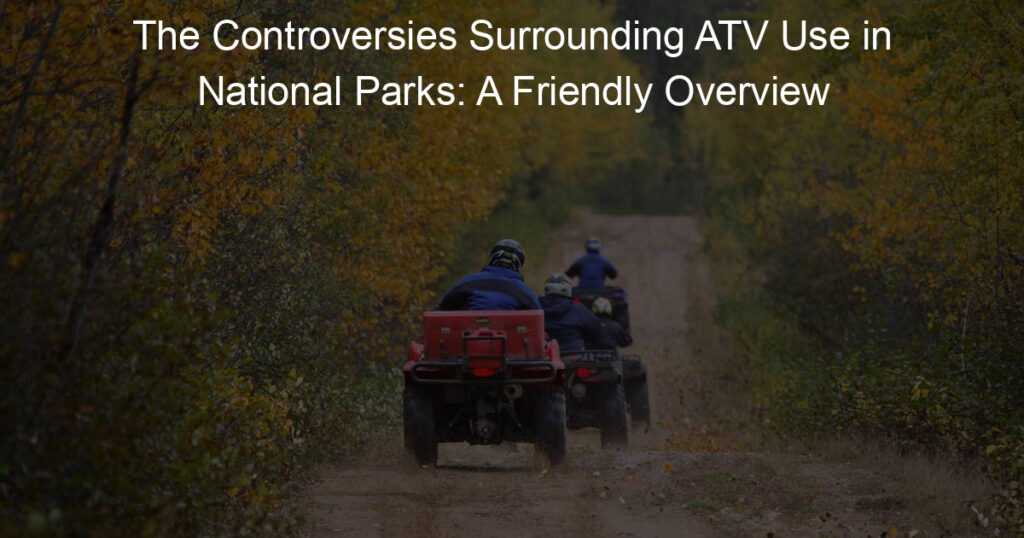ATV use in national parks has been a topic of great debate for many years now. On one hand, all-terrain vehicles (ATVs) offer exciting recreational opportunities, allowing people to explore and enjoy nature in a unique and thrilling way.
On the other hand, there are concerns about the potential negative impacts on the environment, wildlife, and visitor experience due to the noise, pollution, and trail degradation caused by these off-road vehicles.
In recent years, the issue has become increasingly contentious, with passionate arguments on both sides of the debate. Park officials, environmentalists, and ATV enthusiasts are grappling with the complexities of balancing conservation efforts with responsible recreation.
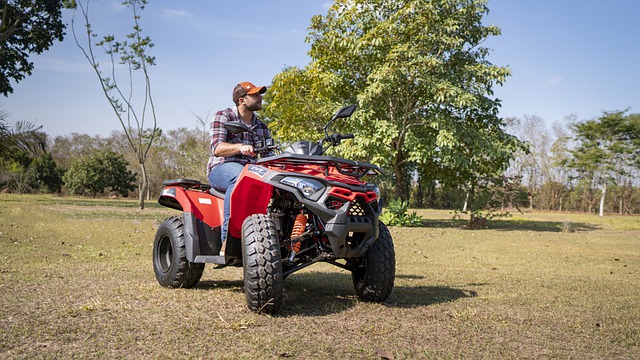
As the popularity of ATVs continues to grow, how do we ensure the protection of precious park resources and provide safe, enjoyable experiences for all visitors?
Key Takeaways
- ATVs provide unique recreational opportunities in national parks but have environmental concerns
- Balancing conservation and responsible recreation is crucial for park officials
- Debate continues as ATV popularity grows, and finding solutions is essential for future park management
Brief History of ATV Use in National Parks
I remember when ATVs, or All-Terrain Vehicles, started becoming popular in the 1980s and 1990s. They were initially designed for off-road use on private land, though many enthusiasts started bringing them to national parks as a way to explore the natural beauty these protected areas have to offer.
The issue with ATV use in national parks is that while they can provide an exhilarating and unique outdoor experience, they can also cause considerable harm to the environment and create conflicts with other visitors.
As ATVs continued to grow in popularity, the National Park Service (NPS) faced increasing pressure to establish regulations governing their use within the park system. In 1987, the NPS implemented a rule requiring all off-road vehicles, including ATVs, to be operated only on designated routes and areas within national parks.

This decision aimed to strike a balance between recreation and preservation by minimizing the environmental and social impacts of ATVs.
Over the years, the rules for ATV use in national parks have evolved. One prominent example is the 2012 rule change that allowed individual park superintendents to decide whether to permit ATVs on park roads.
This decision created some controversy, as it led to inconsistencies in regulations across different parks, potentially enabling increased ATV use in certain areas.
As a result of these changing regulations and growing concerns from both park visitors and environmentalists, the National Park Service has been actively working to find a balance between permitting responsible ATV use and protecting our cherished natural resources for future generations to enjoy.

I hope that as an ATV enthusiast and a lover of national parks, we can ultimately find a way to coexist within these beautiful landscapes while minimizing our impact on the environment.
The Appeal of ATV Recreation in Parks
Visitor’s Perspective
As a visitor to a national park, I’ve found that ATV recreation offers a truly unique experience. It allows me and my fellow adventurers to traverse challenging terrains, access remote areas of the park, and have an adrenaline-pumping adventure, all while enjoying the beauty of nature.
Riding an ATV can also be a fun and exciting way to bond with friends and family.

Additionally, the convenience of driving an ATV allows me to cover larger distances in a shorter amount of time. This helps me to see and appreciate more of the park’s diverse landscapes, flora, and fauna without exhausting myself.
Ranger’s Observations
In my interactions with park rangers, they’ve shared that responsible ATV use can be an asset to national parks. They have seen that designated ATV trails can help spread out visitor traffic, reducing overcrowding at popular attractions.
Furthermore, ATVs can assist rangers in their work, such as patrolling and performing maintenance tasks in hard-to-reach areas.
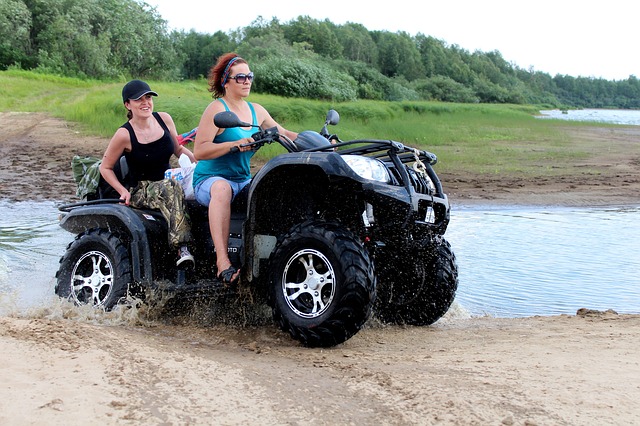
Rangers have also noticed that ATV enthusiasts often build camaraderie and a sense of community among park visitors. It’s common for them to share tips, and trail information and even help out fellow riders in need.
Both visitors and rangers recognize the appeal of ATV recreation in national parks. When used responsibly, ATVs can greatly enhance the enjoyment and exploration of these precious natural spaces.
Impact on Nature and Wildlife
As an outdoor enthusiast, I couldn’t help but notice the controversies surrounding ATV use in national parks.
In this section, I’ll focus on the impact of ATVs on nature and wildlife, specifically touching on the effects on vegetation and noise disturbance to wildlife.
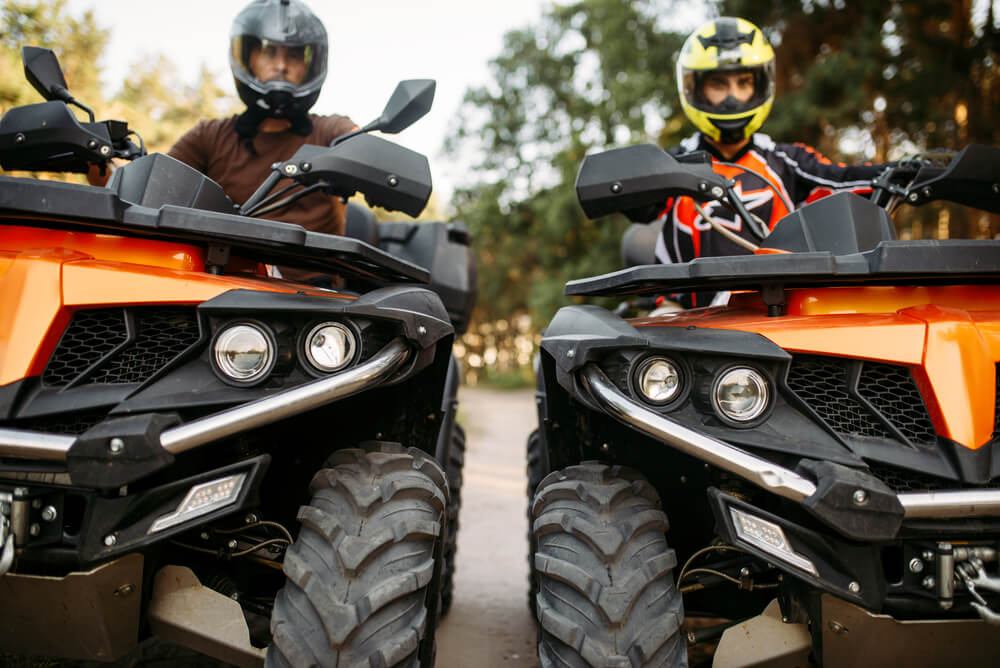
Effects on Vegetation
First, let’s talk about the impact on vegetation. ATVs, with their large wheels and powerful engines, can cause significant damage to plants and soil. They can compact the soil, which makes it difficult for water to penetrate and plants to grow.
Some specific vegetation-related issues that you might observe in national parks where ATVs are allowed include:
- Soil compaction and erosion: ATVs can create deep ruts in the soil, which can lead to water pooling and even soil erosion during heavy rainfall.
- Disturbed plant life: The continuous use of ATVs on park trails destroys delicate plant life, disrupts ecosystems, and takes away from the park’s natural beauty.
- Spread of invasive species: ATVs can also inadvertently transport invasive plant species between parks, which can pose a threat to native plant communities.
Noise and Wildlife Disturbance
Now let’s explore how the noise generated by ATVs can affect wildlife. National parks are havens for a wide array of fauna, and the presence of ATVs can pose a significant disturbance to their natural behavior.
Some examples of how noise might impact wildlife include:

- Altering animal behavior: Loud noises from ATVs can frighten animals, spurring them to change their usual feeding patterns or forcing them to abandon their natural habitats.
- Impaired communication: Noise can interfere with the auditory signals that animals rely on for communication, mating, and sensing potential threats.
- Stress and related health issues: Prolonged exposure to noise from recreational vehicles can induce chronic stress in wildlife, negatively affecting their overall well-being and reproduction success.
In conclusion, as much as I enjoy spending my time outdoors and appreciating the beauty of nature, I believe it’s important to understand the negative impacts that ATVs can have on vegetation and wildlife in our national parks.
By being aware of these issues and following proper wilderness etiquette, we can help protect these treasured natural spaces for generations to come.
Legalities and Regulations of ATV Use
Permits and State Laws
As I continued my research on ATVs and their use in national parks, I discovered that there are many state laws that regulate their operation.

For example, in some parks, you need a permit to use an ATV legally. Permits serve to limit the number of ATVs in an area and protect the environment.
State laws also dictate where you can ride an ATV. In Utah, for example, the state law allows for certain ATV activities, such as hunting and fishing, if the proper permit is obtained.
In most cases, these state laws work together with national park regulations to protect our environment and natural resources.
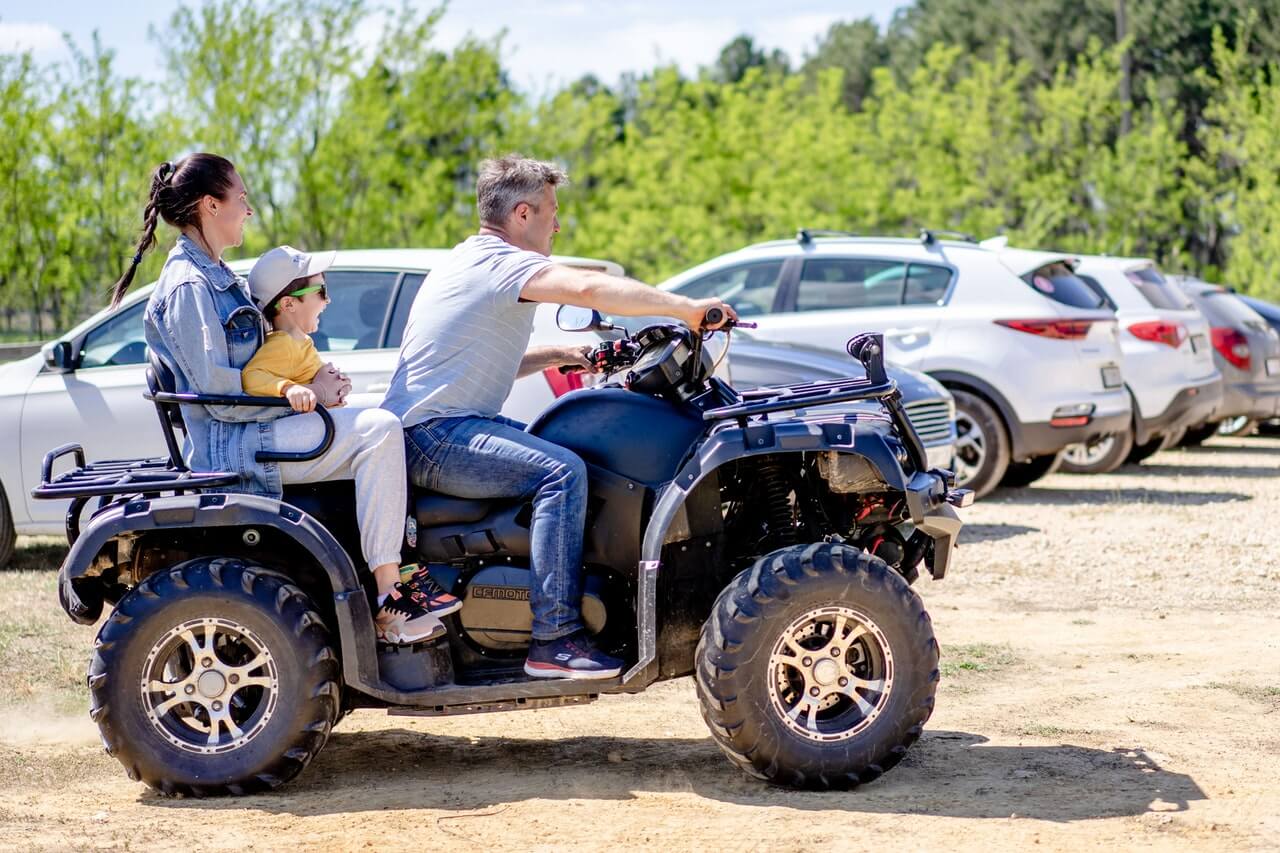
Enforcement and Citations
Enforcing these laws and regulations is also an important aspect of ATV use in national parks. Park rangers play a significant role in this process. They’re responsible for patrolling parks and ensuring that visitors are following both state and national park rules.
They may issue warnings or citations when they encounter someone operating an ATV without the right permits or breaking state laws.
Citations can lead to fines or other penalties for those who do not adhere to the rules. This system helps maintain the safety and enjoyment of our national parks for all visitors while protecting the delicate ecosystems within them.

Concerns Regarding Off-Road Vehicles
Environmental Impact
As someone who adores our national parks, I’m concerned about the environmental impact of off-road vehicles, such as all-terrain vehicles (ATVs) and four-wheel drives, in these protected areas. One significant issue is the potential for soil erosion.
When off-road vehicles venture off designated trails, they can disrupt the balance of the ecosystem, causing damage to plants and affecting the habitats of wildlife.
Another concern regarding ATVs in national parks is pollution. The noise generated by the engines can disrupt the peaceful atmosphere and potentially affect the behavior of local wildlife.
Also, the exhaust from these vehicles can contribute to air pollution, negatively impacting the pristine environments we want to preserve.

Safety and Insurance Issues
Safety is another aspect to consider when discussing off-road vehicles in national parks. As a frequent visitor, I’ve noticed that some off-road enthusiasts can drive recklessly, endangering not only themselves but also other visitors and wildlife. Such behavior raises the question of insurance coverage and liability.
If an accident involving an off-road vehicle occurs within the borders of a national park, who should be held responsible? The park? The driver? The insurance company?
As a result, in many national parks, various measures are being implemented to address these concerns. These include designated zones for off-road vehicles, stricter regulations, mandatory safety training, and permit requirements.

By establishing a balance between park preservation and recreational use, we can ensure that our national parks will continue to thrive for future generations to enjoy.
Public and Ranger Perspectives
The Role of Social Media
I think it’s important to acknowledge the role social media has played in shaping public and ranger perspectives on ATV use in national parks. As a regular user of social media platforms, I’ve noticed the increasing number of posts featuring people riding ATVs in public lands.
While these posts generate buzz and excitement, they often overlook the potential environmental impact and the opinion of park rangers.

From my experience, rangers have expressed concern about a few critical aspects:
- Environmental impact: The noise and emissions from ATVs create disruptions for wildlife, especially during mating and nesting seasons.
- Safety: With more ATV users, there is an increased likelihood of accidents happening in national parks.
- Park upkeep: ATVs can cause damage to trails and other natural resources, which ultimately leads to greater maintenance and repair costs for rangers.
As a result, rangers have been working diligently to educate and inform the public about these potential issues through social media. They advocate for responsible ATV usage in designated areas and tag relevant stakeholders to amplify their message.
Managing Overcrowding
As someone who frequents national parks, I can say firsthand that I’ve witnessed an increase in the use of ATVs in these spaces. As a result, overcrowding is becoming an issue that needs to be addressed to ensure a pleasant experience for all visitors and to maintain the integrity of public lands.
Some potential ways that I’ve seen or heard about to manage overcrowding include:
- Regulating ATV use: Implementing a permit system for ATV use in designated areas can help to limit the number of users.
- Expanding designated areas: Creating more ATV-friendly areas in national parks can help divert crowds and reduce the pressure on popular trails.
- Education and outreach programs: Ensuring that all visitors understand the rules and etiquette surrounding ATV use can promote responsible behavior and help curb overcrowding.
In conclusion, the effect of social media and overcrowding are two key factors public land managers and rangers have to consider when it comes to ATV use in national parks.
Their continued efforts to address these challenges and promote responsible recreation will help preserve the beauty of these cherished spaces for future generations.
Case Studies of Specific National Parks
Arches and Canyonlands
When I visited Arches and Canyonlands National Parks in Utah, I noticed that ATV use was a contentious issue. Some visitors used ATVs to explore the stunning landscapes of Moab, but their noise and potential environmental impact created concerns for others who wanted to enjoy these protected areas.
In Arches National Park, home to the famous Delicate Arch and other incredible rock formations, off-road vehicle use is limited to designated routes to minimize damage to the sensitive desert ecosystem.
At Canyonlands National Park, the vast and rugged terrain attracts many off-road enthusiasts. My visit to the park allowed me to witness first-hand the popular White Rim Road, a 100-mile loop that offers both challenging off-road experiences and scenic vistas.
The park has established strict regulations for ATVs and other off-road vehicles to protect its resources and reduce conflicts among visitors.
Yellowstone and Zion
I had the opportunity to explore Yellowstone and Zion National Parks and observed how they handle ATV use.
Yellowstone National Park, known for its geysers, wildlife, and unique geothermal features, prohibits the use of ATVs on park roads and trails to protect its fragile ecosystems and maintain a peaceful atmosphere for visitors.
In Zion National Park, the towering cliffs and narrow canyons provide a stunning backdrop for outdoor enthusiasts. I found out that while ATVs are allowed on some nearby public lands, they are strictly prohibited within the park boundaries.
The National Park Service has implemented shuttle services to minimize traffic congestion and reduce potential impacts on the environment.
Glen Canyon National Recreation Area
My adventure to Glen Canyon National Recreation Area, spanning across both Utah and Arizona, highlighted the growing popularity of ATV use for exploring the region’s beautiful scenery, including Lake Powell and the Colorado River.
The recreation area accommodates a wide range of outdoor activities and has designated off-road vehicle routes that allow visitors to experience the area’s unique landscapes.
Nevertheless, I also learned that the National Park Service works to minimize conflicts and protect the resources found within Glen Canyon National Recreation Area.
The agency has established strict rules and regulations for off-road vehicle use to keep visitors safe and ensure the environment remains pristine for future generations.
Alternative Recreational Vehicles and Their Impact
OHVs and UTVs
I’ve noticed that off-highway vehicles (OHVs) and utility terrain vehicles (UTVs) are becoming increasingly popular in recreational areas. While they can provide a thrilling experience, they also have a significant impact on the environment.
Some issues I’ve seen include soil erosion, damage to vegetation, and disturbance to wildlife habitats.
To mitigate these issues, some national parks have begun implementing stricter regulations on OHV and UTV use.
For example:
- Limiting trail access
- Requiring special permits
- Implementing seasonal closures
By following these guidelines, I believe we can enjoy the excitement of OHVs and UTVs while minimizing their ecological footprint.
Snowmobiles and Personal Watercraft
Another set of alternative recreational vehicles includes snowmobiles and personal watercraft. While they allow us to explore the beauty of nature, they also come with potential environmental impacts.
In the case of snowmobiles, the use of two-stroke engines contributes to air pollution. Personally, I find that embracing cleaner technologies, such as four-stroke engines or electric snowmobiles, can help reduce emissions.
Personal watercraft, like jet skis, can have an impact on aquatic ecosystems.
Appropriate measures I’ve encountered are:
- Respecting no-wake zones
- Avoiding sensitive areas, such as shallow waters and wildlife habitats
- Maintaining the watercraft to prevent leaks and spills
By being mindful of our actions, I believe we can strike a balance between enjoying alternative recreational vehicles and preserving the natural beauty of our national parks.
Future of ATV Use in National Parks
As an outdoor enthusiast, I’ve observed the ongoing debate about ATV use in national parks. There’s a growing concern among conservationists that the use of ATVs may have negative impacts on these natural treasures.
Yet, some riders argue that responsible ATV use is simply another form of recreation that should be allowed, like hiking or biking.
I’ve come across several discussions involving the National Forest Service and volunteers who work hard to maintain the trails. They’re concerned about potential damage to the environment, wildlife, and safety issues for other park visitors who may not be expecting to encounter ATVs in national parks.
While some national recreation areas do allow ATV use, the question remains whether this practice should be expanded to more areas or further restricted in the future. Many believe in striking a balance, allowing ATVs in specific zones, and setting strict rules for their use.
As an optimistic observer, I see possible collaborations between ATV enthusiasts, conservationists, and park management to create designated trails.
Such trails would minimize the impact on the environment, ensuring a safe and enjoyable recreational experience for all.
In conclusion, the future of ATV use in national parks is uncertain, and regulations may vary across locations.
Regardless, continuing dialogues and cooperation among various stakeholders can lead to a sustainable solution for both conservation efforts and recreational opportunities.
Frequently Asked Questions
What are the environmental impacts of ATVs in national parks?
As an ATV enthusiast, I notice that ATVs can cause some environmental impacts in national parks. The most common ones include soil erosion, trail widening, and damage to vegetation.
ATVs can break up soil structure, leading to erosion, and when multiple ATVs use the same trails, the trails widen over time and destroy the park’s natural habitats.
How does ATV use affect wildlife in national parks?
I often see that ATV use affects wildlife in national parks in various ways. The noise produced by ATVs can disturb the behavior of animals resulting in reduced feeding, nesting, and mating.
ATVs can also directly destroy the habitats that some animals depend on, such as bird nesting sites and small mammal burrows present near trails.
What measures are taken to limit ATV activities in national parks?
I’ve encountered several measures taken by national parks to limit ATV activities. These primarily include trail closures, providing designated ATV trails to prevent off-trail damage, and enforcing speed limits and seasonal restrictions for ATV riders looking to minimize their impact on parks’ ecosystems and wildlife.
Further, some parks require permits, ensuring that only a certain number of ATVs can be used within the park.
What are the safety concerns regarding ATV use in national parks?
Being an ATV rider myself, I am aware of the potential safety concerns that can occur in national parks. ATVs can be involved in collisions with hikers, bikers, or other recreational users, causing severe injuries.
Furthermore, ATV riders can face safety risks themselves from rollovers, falls, and encounters with wildlife.
How does overcrowding due to ATVs impact park visitor experiences?
I have observed that overcrowding due to ATVs can significantly impact the overall experience of park visitors. The noise, traffic, and potential conflicts between ATV riders and other recreational users can lead to diminished feelings of solitude, peacefulness, and immersion in nature for many visitors.
What are alternative solutions for responsible ATV use in national parks?
In my opinion, some alternative solutions for responsible ATV use in national parks include providing designated trails, enforcing strict regulations regarding noise levels, creating speed limits, and promoting educational programs to inform ATV riders about responsible use and conservation practices.
Encouraging off-season use or implementing a permit system can help distribute ATV activities more evenly and reduce overcrowding in the parks.

